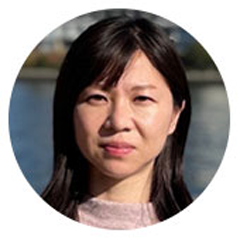Twitter post
On February 20, media reports announced the death of famed Japanese manga artist Matsumoto Leiji. The same day, Ukraine's embassy in Japan tweeted the following quote from Matsumoto ― a man who made it a life mission to convey "the foolishness of war" through his comics.
"We should not fight. We are not born to die. We are born to live."
The cultural attaché at the embassy explains: "Japanese anime is very popular in Ukraine and has inspired many people to start studying the Japanese language. Anime has had a huge impact." Here are three stories that show how strong that bond is:
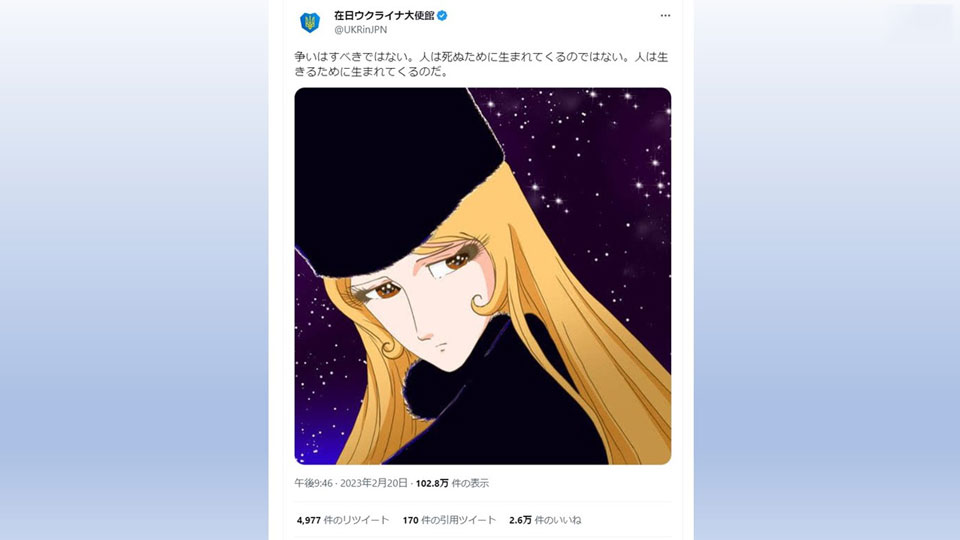
'Anime brings me comfort'
"I couldn't really understand Japanese, I didn't have any close friends here, so I cried at home every day for about a month after we evacuated to Japan," explains 20-year-old Liliia Skorohodova, who is originally from a town on the outskirts of Kyiv.
A university student, Liliia evacuated to Japan in March 2022 at the urging of her mother, worried about what might happen to her if she stayed in Ukraine. She is now studying at the Japan University of Economics in Dazaifu City, Fukuoka Prefecture.
Liliia loves anime and manga, and that's what inspired her to choose Japan.
From an early age, she became familiar with the works of Studio Ghibli, including My Neighbor Totoro, which were broadcast on TV mostly in Russian. Then at 15, she encountered Naruto, written by Kishimoto Masashi. It became her favorite, sparking her interest in Japanese language and culture.
But living alone in an unfamiliar place and away from her family was not easy.
"I still can't believe that the war is going on, that it isn't just a scary dream," says Liliia. "I'm always worried about where the missiles will strike, and sometimes I don't feel like doing anything. At times like that, anime and manga bring me comfort."

The Japan University of Economics has accepted about 70 students like Liliia, who were evacuated from Ukraine. According to the program supervisor, most of them cited anime and manga as the reason for their interest in Japan.
Translating anime into Ukrainian
Last year, Liliia took part in a collaborative project between the university and a translator training school to translate two Japanese anime films into Ukrainian.

The five-month project involved 23 students who were divided into teams to work on the translations. Liliia says at first, she found it hard to find the right expressions to convey the nuances of Japanese, but she persevered. The films were released with Ukrainian subtitles in November 2022.

Liliia shared her joy in receiving positive feedback from Ukrainian friends who saw the films. "It was my first time translating and it was difficult," she says, "but it was a really interesting experience."
In February, Liliia visited Ukraine for the first time since she evacuated. "I'm truly grateful for this experience. After the war is over, I would like to return to Ukraine and start a career teaching language to children. There are still very few manga and anime in Ukrainian, so I hope to be able to translate again."
Popular anime in Ukraine
"I knew that Sailor Moon was particularly popular in Ukraine and that Evangelion had been translated into Ukrainian, but I didn't realize that Barefoot Gen was also being aired."
Hirano Takashi has been living in Ukraine for 15 years. He is the editor of the Japanese-language edition of Ukrinform, a Ukrainian news agency. In researching Ukrainian history and culture, he posed a question on Twitter about the Japanese anime Ukrainians used to watch in their childhood. Respondents gave the titles of more than 25 anime.
Ukrainians' anime favorites
Sailor Moon
Neon Genesis Evangelion
Doraemon
Cardcaptor Sakura
Shaman King
Naruto
Digimon Adventure
Dragon Ball
BLEACH
Maya the Honey Bee
Fist of the North Star
Speed Racer
Full Metal Panic!
Barefoot Gen
Flying Phantom Ship
Galaxy Express 999
According to Twitter survey
Hirano explains that there have been ardent fans of Japanese anime for a long time. Recently, online audiences have been watching popular Japanese shows such as Attack on Titan and Demon Slayer, as well as dubbed versions of anime films such as Shinkai Makoto's Your Name in movie theaters.
Hirano says: "Stores are selling anime-related merchandise in central Kyiv, and recently the first volume of the manga Fullmetal Alchemist was translated into Ukrainian and is now in bookstores. Although they haven't become a huge trend among all generations, Japanese manga and anime are steadily growing in popularity."
However, the military invasion is destroying this culture.
One casualty was Comic Con Ukraine, the country's largest cosplay show. The two-day event attracted 40,000 people in 2019, but the war forced organizers to abandon last year's show.
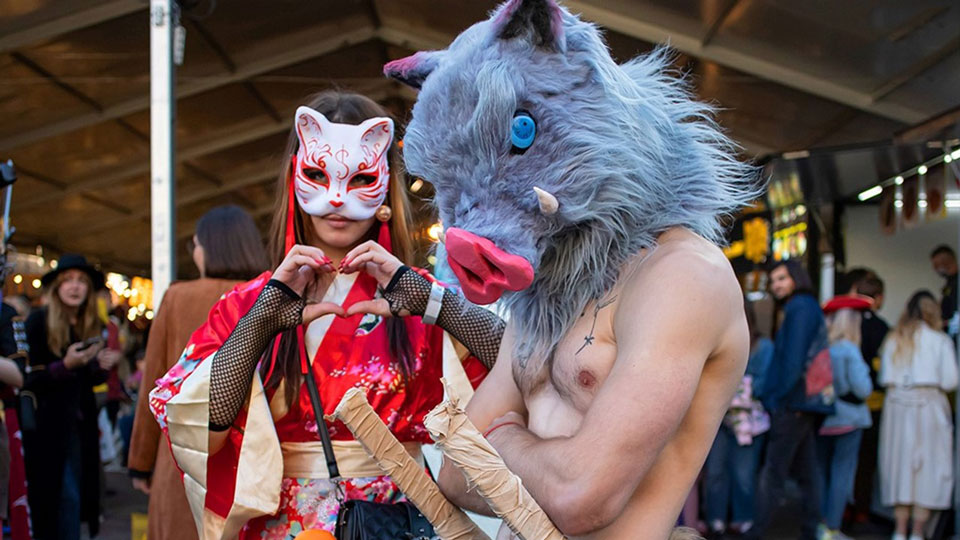

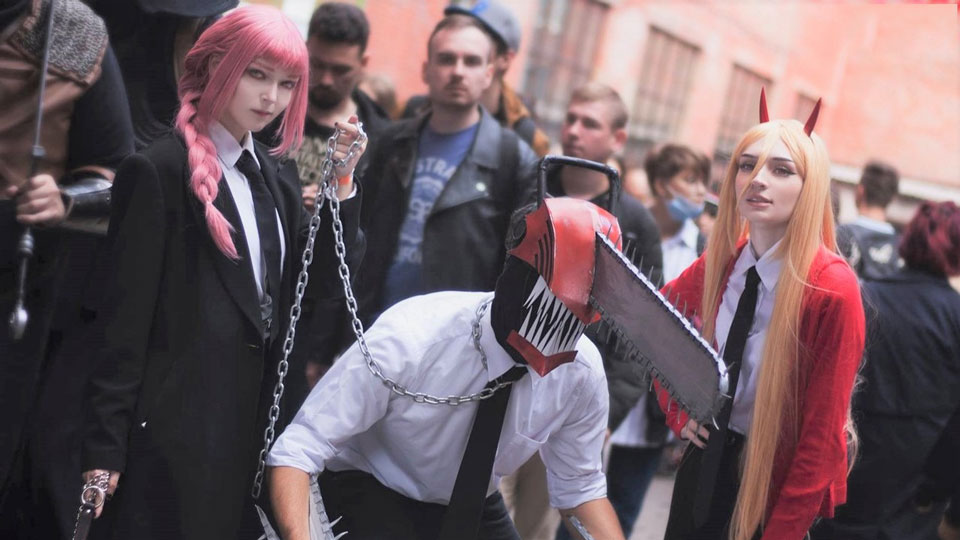
Hirano says, while civilian life in the city has regained some semblance of stability, air raid alarms still sound from time to time, making it difficult to hold outdoor events that would draw large crowds.
Nevertheless, Comic Con organizers have not lost hope, vowing to hold a scaled-down version in September.
"This year we may be able to hold a small cosplay event for a few hundred people in a place with a missile shelter. We too are determined to overcome these difficulties and hold Comic Con after Ukraine's victory."
According to Hirano, anime culture has become an inseparable part of everyone's lives.
"Throughout the war, the people of Ukraine continue to watch anime. People are translating and dubbing content and going about their daily lives. At the same time, they are taking steps to contribute to their country's victory. They are not just enduring but enjoying and fostering sustainable lifestyles. I believe that a country with this kind of spirit is less likely to be defeated. They can fight to win true freedom."

Sharing animated films from Ukraine
Kokawa Natsumi believes anime culture can be a two-way exchange. While working at a film distribution company in Tokyo, she had the idea of showcasing animated films from Ukraine to audiences in Japan.
Kokawa suggested that her company acquire distribution rights to the film, The Stolen Princess, a children's fantasy film released in Ukraine in 2018.
"I was so impressed by the CG techniques used in this film. This animation is based on a work by a Russian poet, and I think it symbolizes a time of peace."
Her bosses rejected her proposal, but Kokawa was unbowed. Quitting her job, she invested almost all of her personal savings into acquiring the distribution rights.
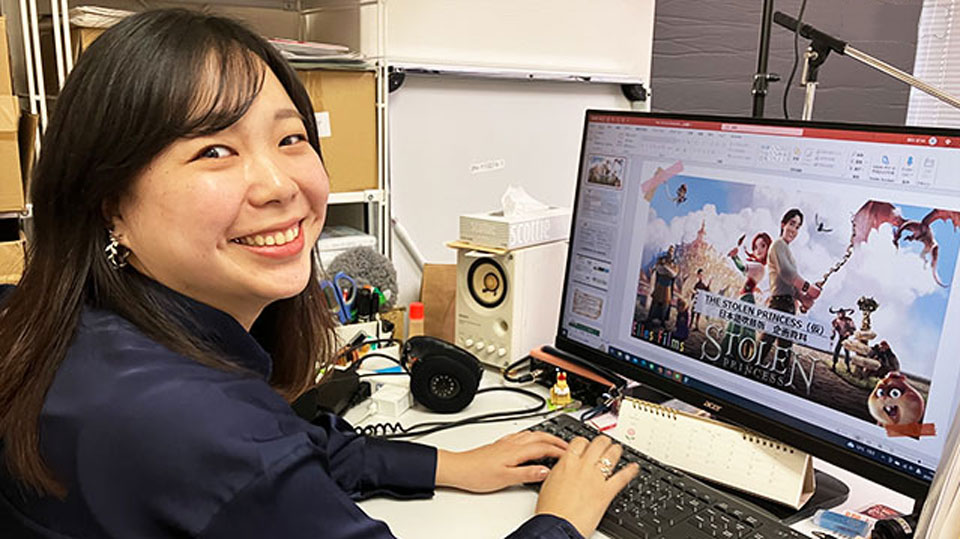
Last September, she launched a crowdfunding campaign to cover the cost of producing a Japanese-dubbed version. Although the project did not reach its goal of 17 million yen, preparations are underway to release the film nationwide in summer 2023, using the 9.3 million yen raised.
"This is a film that children can enjoy too and I hope it will spark interest in Ukraine," says Kokawa. "It's my mission to connect people through films."



